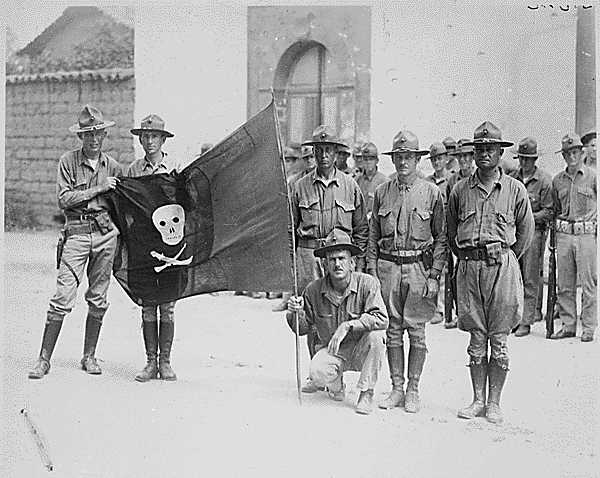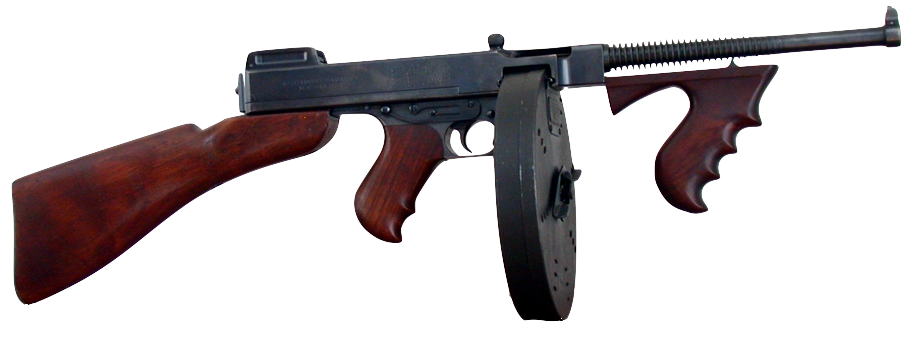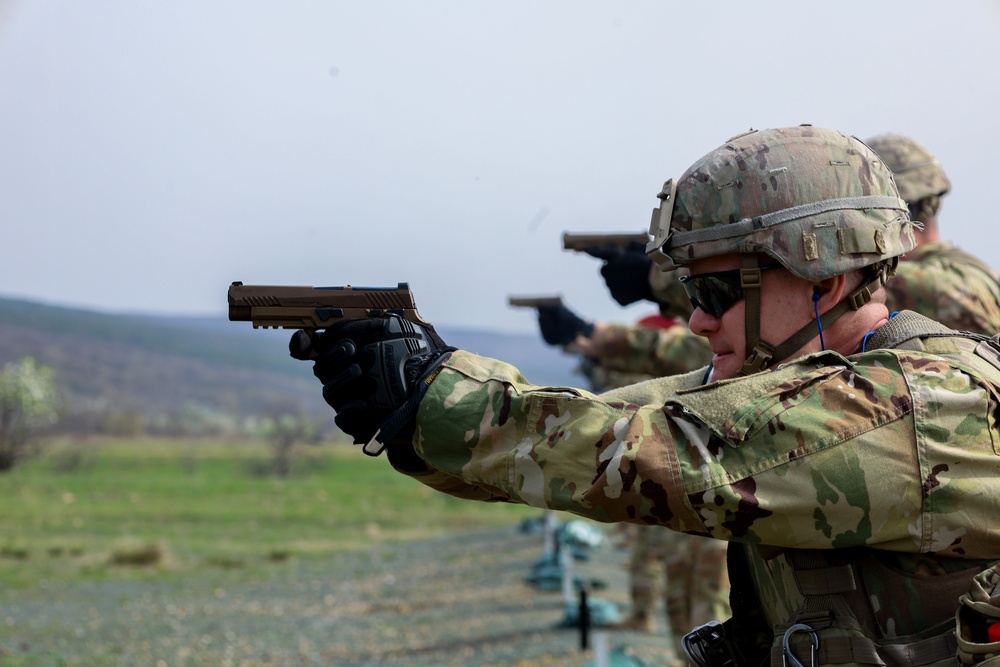How the Thompson SMG helped shape modern warfare
- By Travis Pike
Share This Article

World War II is largely credited with the explosive birth of modern maneuver warfare, but the conflicts between WWI and WWII largely influenced and helped develop modern squad tactics. Specifically, Marines taking the Thompson SMG to Nicaragua and beyond helped develop maneuver warfare and small-unit tactics.
The Banana Wars were a complex series of engagements where the United States attempted to quell local rebellions at the behest of American fruit companies.
The United States Marine Corps was often called in for these engagements due to its flexible design and seaborne nature. U.S. troops occupied Nicaragua from 1912 to 1933 almost continuously. Today we are going to take a look at the Marines and the Thompson SMG during the Second Nicaraguan campaign. The Thompson rose to fame during WWII, but it was in this war that it earned its stripes.
The Thompson SMG and the Second Nicaraguan campaign

When the Marines landed in Nicaragua, they carried mostly standard arms of the day. This included the Springfield M1903 bolt-action rifle, the newly minted Browning Automatic Rifle, the M1911, and several contemporary belt-fed machine guns. They also landed with the Thompson SMG.
The Marines were the first armed force to adopt the Thompson SMG. They went armed with the gun at the behest of a few Marine officers, including two with the surname Cutts who would later design the Cutts compensator for the Thompson. A third officer, Victor Bleasdale, also heavily promoted the gun. He labored for the gun so hard that Chesty Puller, the legendary Marine Corps officer, once said, “the man that gave it the biggest push… was Bleasdale.”
Bleasdale also would receive a cut of the profits based on an agreement with the two Cutts. Admittedly the entire idea seemed to be a way for the Cutts and Bleasdale to make some extra cash.
While it seems that the adoption of the Thompson SMG was done under some scandalous means, it wasn’t a bad decision, as World War I showed the power of automatic fire, and handheld automatic fire could be revolutionary. And it would also prove a very influential call.
Related: This is why the iconic M16 rifle has served for so long
In the jungle, you need a jungle gun

Nicaragua was covered in thick, luscious jungle and jungle warfare tends to favor close combat.
Guns like the Springfield 1903 were great for long-range fire over open fields, but the 43.2-inch long rifle and its bolt action was a poor choice for close-quarters jungle fighting. They also suffered from a slow rate of fire, limited capacity, and length. The BAR offered full automatic firepower but was still 47 inches long and weighed nearly 20 pounds. The belt-fed machine guns of the era were heavy and hard to move from place to place and slow to set up when dealing with insurgent warfare. So something else was needed.
The Thompson SMG weighed 10 pounds and was only 33.7 inches long. For comparison, an M4 with its stock extended is 33 inches long. The Thompson also offered a firing rate of 700 rounds per minute. Its effective range was only 50 yards or so, but in jungle warfare, that proved to be enough.
Therefore, the Thompson SMG became the choice of Marines who walked point on patrol. The weapon offered a lot of firepower that allowed the Marines to suppress enemy forces and charge them.
Related: The MEU(SOC) pistol armed elite Marines for decades
The Thompson SMG changes squad tactics

The Thompson SMG acted almost as a proto-SAW that could keep the enemy’s head down while a rifle team maneuvered. This was a fair bit different than the WWI tactics of using heavier machine guns to support trench warfare. Thus, the Thompson SMG allowed the Marines to have maneuverable firepower and to locate, close with, and destroy the enemy.
Chesty Puller and his Company M of local Guardia made constant use of the Thompson. This company was designed to pursue and punish the enemy. Their combination of Thompsons, BARs, and Springfields made them a mobile and lethal force that influenced how Marines squads and companies fought up until this point.
This helped the Marines develop small unit tactics that are still used to this day. The Small Wars of the Marine Corps and the Thompson SMG changed how squads could fight and showed the big difference a small unit can make on the battlefield.
Editor’s Note: This article was originally published in October 2022.
Read more from Sandboxx News
- Northrop Grumman’s Manta Ray submarine could be a boon for anti-submarine warfare
- Special Forces engineers are training to dig ditches and destroy tanks
- The replacement of the Marines’ problem-ridden AAVs arrives
- AI-piloted F-16 takes on human pilot in ‘complex dogfights’
- Mako: Arming the F-35 with hypersonic missiles
Related Posts
Sandboxx News Merch
-

‘AirPower’ Classic Hoodie
$46.00 – $48.00 Select options This product has multiple variants. The options may be chosen on the product page -

‘Sandboxx News’ Trucker Cap
$27.00 Select options This product has multiple variants. The options may be chosen on the product page -

‘Sandboxx News’ Dad Hat
$27.00 Select options This product has multiple variants. The options may be chosen on the product page

Travis Pike
Travis Pike is a former Marine Machine gunner who served with 2nd Bn 2nd Marines for 5 years. He deployed in 2009 to Afghanistan and again in 2011 with the 22nd MEU(SOC) during a record-setting 11 months at sea. He’s trained with the Romanian Army, the Spanish Marines, the Emirate Marines, and the Afghan National Army. He serves as an NRA certified pistol instructor and teaches concealed carry classes.
Related to: Military History

The HK MK23 built for SOCOM was the first and last offensive handgun

The slick custom shotgun carried by a Navy SEAL point man in Vietnam

Are the Army’s old Beretta M9 and new SIG M17 pistols as similar as people think?

The Switchblade, loitering munitions, and the new terrifying face of warfare
Sandboxx News
-

‘Sandboxx News’ Trucker Cap
$27.00 Select options This product has multiple variants. The options may be chosen on the product page -

‘AirPower’ Classic Hoodie
$46.00 – $48.00 Select options This product has multiple variants. The options may be chosen on the product page -

‘AirPower’ Golf Rope Hat
$31.00 Select options This product has multiple variants. The options may be chosen on the product page -

‘Sandboxx News’ Dad Hat
$27.00 Select options This product has multiple variants. The options may be chosen on the product page
